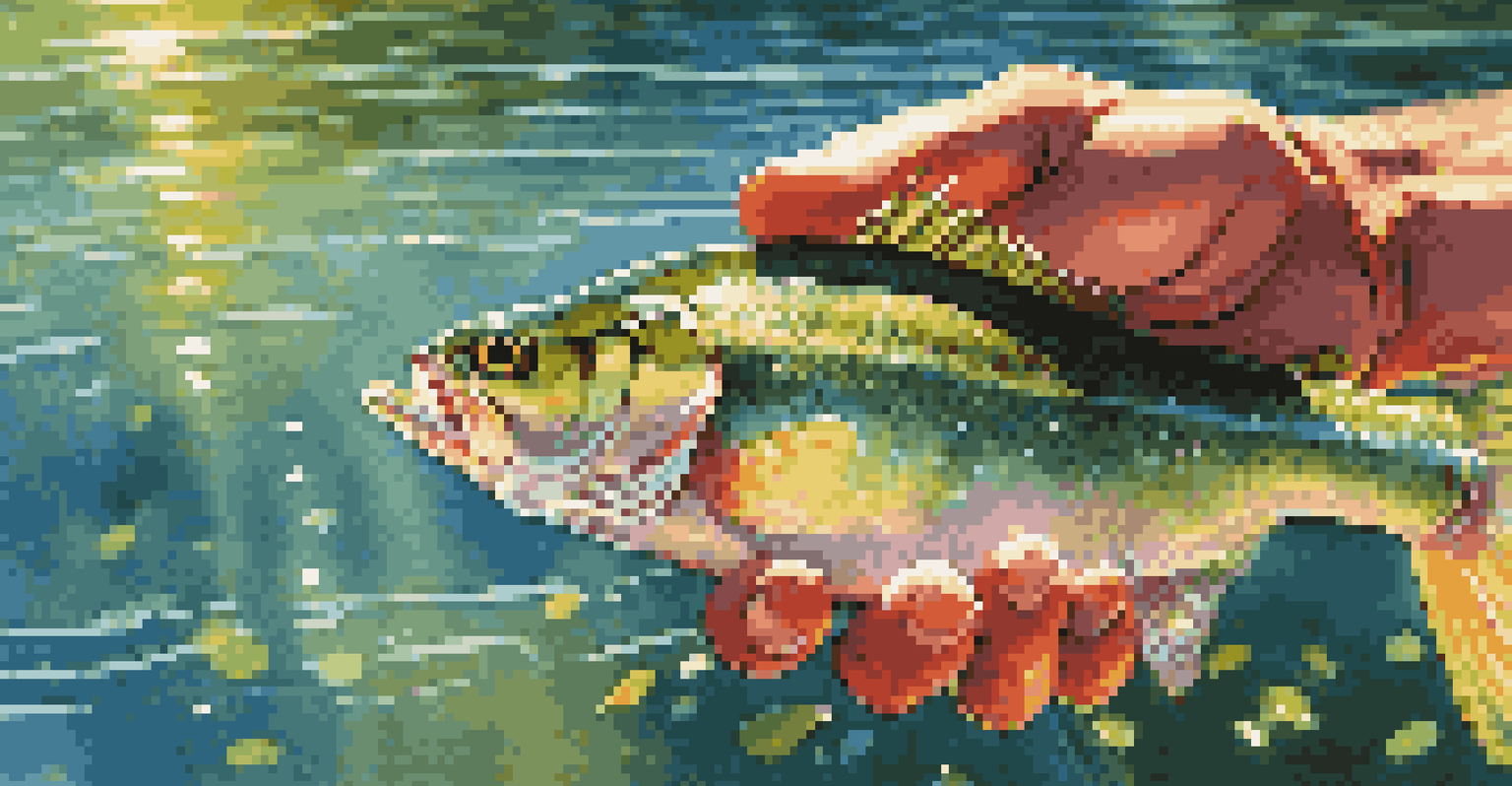How to Choose the Right Fishing Location: Key Considerations

Understand the Type of Fish You Want to Catch
Before heading out, it's crucial to know what type of fish you're targeting. Different species thrive in various environments, so understanding their habits can guide your location choice. For example, if you're after bass, you might want to check out freshwater lakes or rivers, while saltwater enthusiasts might target coastal areas for species like flounder.
Fishing is not an escape from life, but often a deeper immersion into it.
Researching local fishing reports can also provide insight into what's biting and where. These reports often indicate hot spots based on recent catches, helping you pinpoint the best areas. Additionally, talking to local anglers can offer valuable tips that aren’t always found in guidebooks.
Ultimately, having a clear goal for your fishing trip not only enhances your chances of success but also ensures you're fishing in a location where your target species is abundant.
Consider Seasonal Patterns and Weather Conditions
Fishing conditions can vary greatly with the seasons, so it's important to consider when you're going. For instance, many fish species are more active during certain times of the year, which can influence their location. Spring often brings spawning activities, making it a prime time for anglers to catch certain species.

Weather also plays a significant role in fishing success. Overcast days can be ideal as fish tend to be more active and less cautious. Conversely, extreme weather conditions, like heavy rain or strong winds, can make fishing challenging and lead to less favorable conditions.
Know Your Target Fish
Understanding the type of fish you want to catch and their habitats can greatly enhance your fishing success.
By aligning your fishing plans with both seasonal trends and weather forecasts, you can significantly improve your chances of a successful day on the water.
Research Local Regulations and Restrictions
Before you pack your gear, familiarize yourself with local fishing regulations. Each region may have specific rules regarding catch limits, size restrictions, and protected areas. Ignoring these regulations can not only lead to fines but also harm local ecosystems.
The best time to go fishing is whenever you can.
Check if you need a fishing license or if certain areas require special permits. Many states have online resources where you can find this information quickly. Being informed not only keeps you compliant but also enhances your overall fishing experience.
Respecting local regulations ensures that fish populations remain healthy for future anglers and helps maintain the natural balance of the waterways.
Evaluate Accessibility and Travel Considerations
Accessibility can greatly influence your fishing experience. Some locations may require a long trek or a boat, while others are right off the road. Consider how easy it is to reach your desired spot, especially if you're bringing along family or friends.
If you plan to fish in a remote area, ensure you have the proper gear and supplies, including food, water, and safety equipment. Being well-prepared can make a world of difference when you're miles away from civilization.
Consider Weather and Seasons
Aligning your fishing plans with seasonal patterns and weather forecasts can significantly improve your chances of a successful trip.
Ultimately, choosing a location that balances adventure with convenience can make for a more enjoyable fishing trip.
Assess the Habitat and Structure of the Water Body
Understanding the habitat is key to finding fish. Look for features such as underwater structures, vegetation, and varying depths, as these elements attract fish. For instance, areas with rocks or fallen trees can provide shelter for fish, making them prime spots for anglers.
Additionally, consider the clarity of the water. In clearer waters, fish may be more cautious, while murky waters can allow for more aggressive feeding. Knowing how these factors affect fish behavior can help you choose the most productive spots.
By assessing the habitat and structure of the water body, you can enhance your chances of success and enjoy a more rewarding fishing experience.
Look for Competitive Fishing Pressure
Fishing pressure refers to the number of anglers fishing in a particular area. High fishing pressure can lead to more cautious fish, making them harder to catch. Therefore, choosing a less crowded spot might yield better results and a more enjoyable experience.
Consider fishing during off-peak times or venturing to lesser-known locations to avoid competition. Weekdays or early mornings often see fewer anglers, increasing your chances of a successful catch.
Research Local Regulations
Familiarizing yourself with local fishing regulations ensures compliance and helps maintain healthy fish populations.
By being strategic about when and where you fish, you can avoid the crowds and improve your odds of reeling in that trophy fish.
Utilize Technology and Local Resources
In today’s digital age, technology can be a game-changer for fishing enthusiasts. Apps and websites provide real-time data on water conditions, fish activity, and even local fishing reports. Utilizing these tools can save you time and enhance your fishing strategy.
Don't underestimate the power of social media and online forums either. Engaging with local fishing communities can lead to tips on secret spots and techniques tailored to your area. Plus, sharing your experiences can foster connections with fellow anglers.

By leveraging technology and local resources, you can gain valuable insights that make your fishing trips more successful and enjoyable.